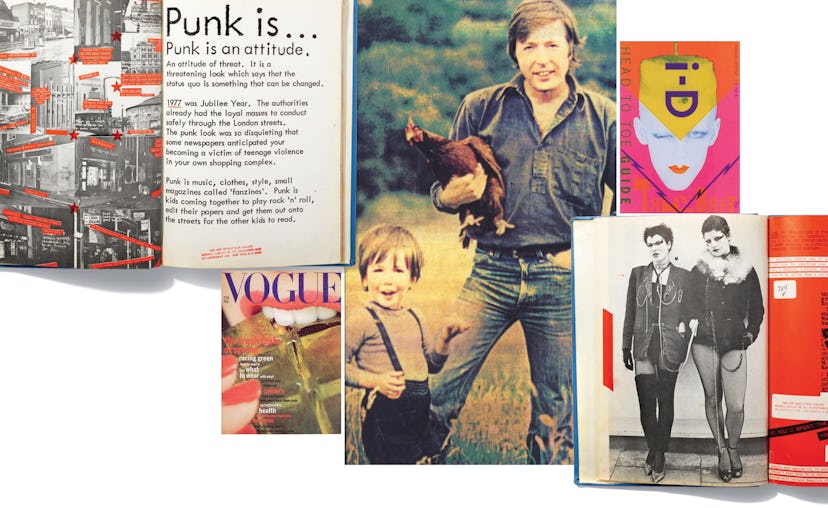When Edward Enninful called and said that Stefano Tonchi wanted to invite me to be a guest in the world of W, as a one-off creative collaborator for the September issue, my initial thought was “How?” Edward, W’s Creative and Fashion Director, told me that the cover would be Rihanna photographed by Steven Klein and proceeded to go through his ideas, explaining that he was inspired by the fact that he had started out working at i-D, the magazine that my wife, Tricia, and I founded in 1980. He said that my studio in London would have the freedom to change the W logo for the issue, and that I would be able to bring a fresh eye to the graphics. This was an interesting prospect.
It’s hard to believe that Tricia and I knew Edward as a teenager, when he first came to i-D, to assist Beth Summers, under the watchful eye of the superstylist Simon Foxton. We’ve proudly followed his career for 25 years—he even received an Order of the British Empire from Queen Elizabeth this year! I also knew Stefano, from the days in Milan when he was editing his indie magazine, Westuff—his sister, Isabella, and I had worked together at Fiorucci—so there was a definite family connection all around. What’s more, for me it was an honor to be invited out of “retirement” to play once again. Back in 1966, as a student at the West of England College of Art, working on the college magazine, I started using silk screens—hand-cut stencils on a picture screen—in the layouts. In that pre-digital era, everything was done by hand. Hand graphics became my aesthetic and have remained so for 50 years. And my love affair with manual typewriters has gone on forever.
For W, the scenario I imagined was that the power grid had gone down, and I would be pasting new prints over the pages of last year’s September issue, covering every inch of paper. You’ve got to be resourceful; you’ve got to be creative. I think that communicating through magazines—or any medium—is an important craft and skill. So that was a sort of starting point, the idea of physically making a magazine the way I used to.
I’ve always thought that perfection was boring—we can aim for perfection, yes, but for me the idea of perfection is a dead concept. A lot of stuff that comes off the presses has been “snapped to grid”—the computer is basically in control—and, as a result, the concepts of design are forgotten. I didn’t want something that felt like it had been made by a robot. My mom used to make great Victoria sponge cakes, and she said her success was always in the whisking: It was always by hand. There you go. You’ve got to whisk in the love. At a certain point over the past few decades, everything became so mechanized, clinical, and digital. We lost the humanity—and humanity is important in communication.
I remember a story Steven Klein did early on with Edward using photocopies—and the idea of moving actual pieces of paper around is something that is still in Steven’s mind. He’s an image-maker, and his Rihanna story is almost like a graphic novel. I felt that Edward’s editorial concepts provided a really interesting commentary on today’s society. Craig McDean’s story—inspired by the i-D “straight up” pages—combined fashion and documentary photography, with each individual expressing her style; the Steven Meisel shoot with the transgender model Casil McArthur felt especially relevant; and Inez and Vinoodh’s portfolio shot in Salem, Massachusetts, at a time when there is so much hysteria in the world, struck a nerve.
Tricia is much more the political side of our family and has always believed in the responsibility we hold as visual communicators. I often say that we are part of the fantasy factory, that magazines are there to feed people’s imagination, to provide entertainment, but I also believe they should reflect the moment. The youth today are becoming politicized again. They just need to be empowered, and to empower people is the best thing in the world: to get them to believe that they can make a difference and go forward in a positive way.
Pushing for what you want is something Stefano, Edward, and their team are really good at. My role has been that of taskmaster and creative agitator. My thanks to W—it’s been fun.
